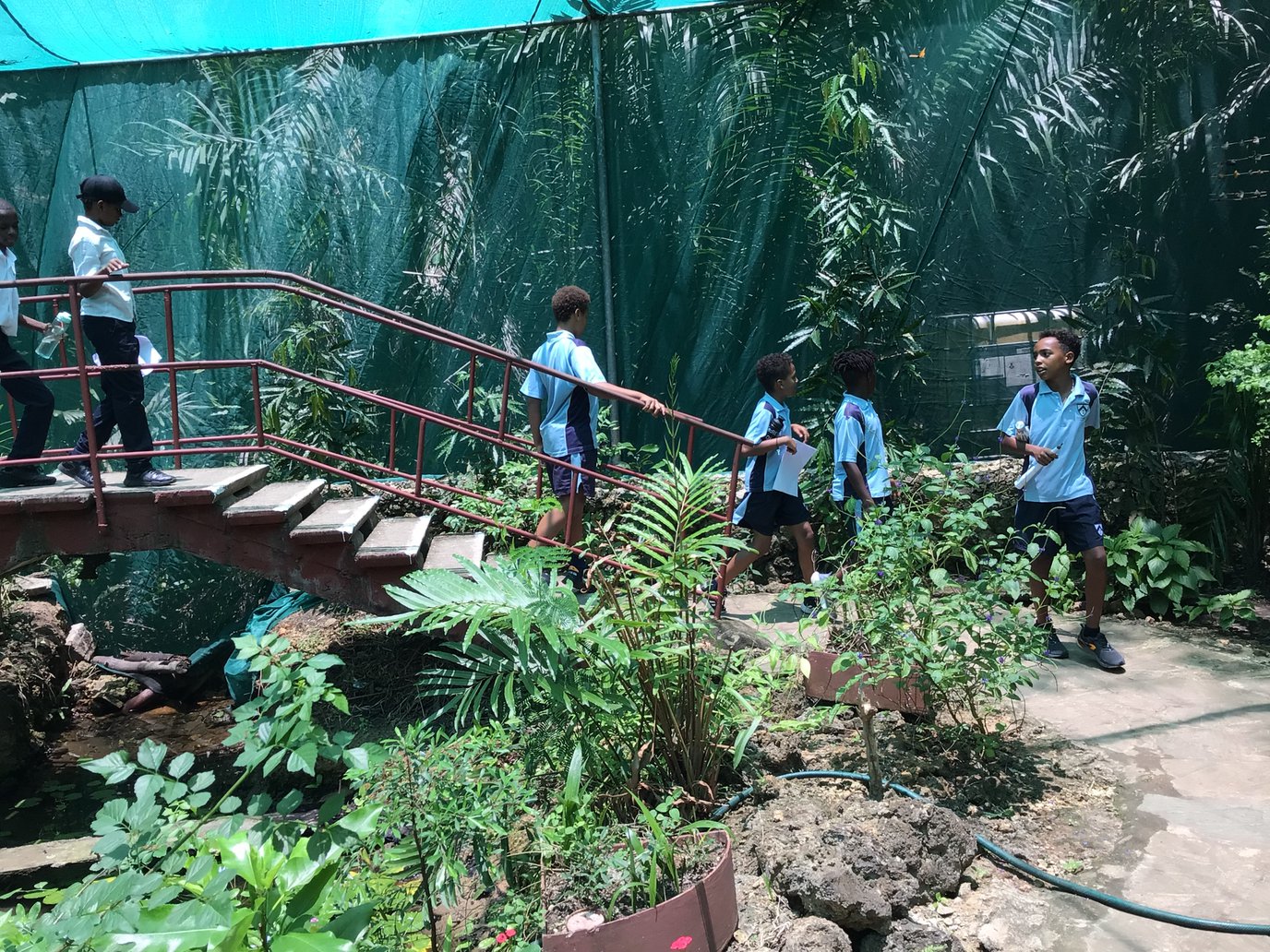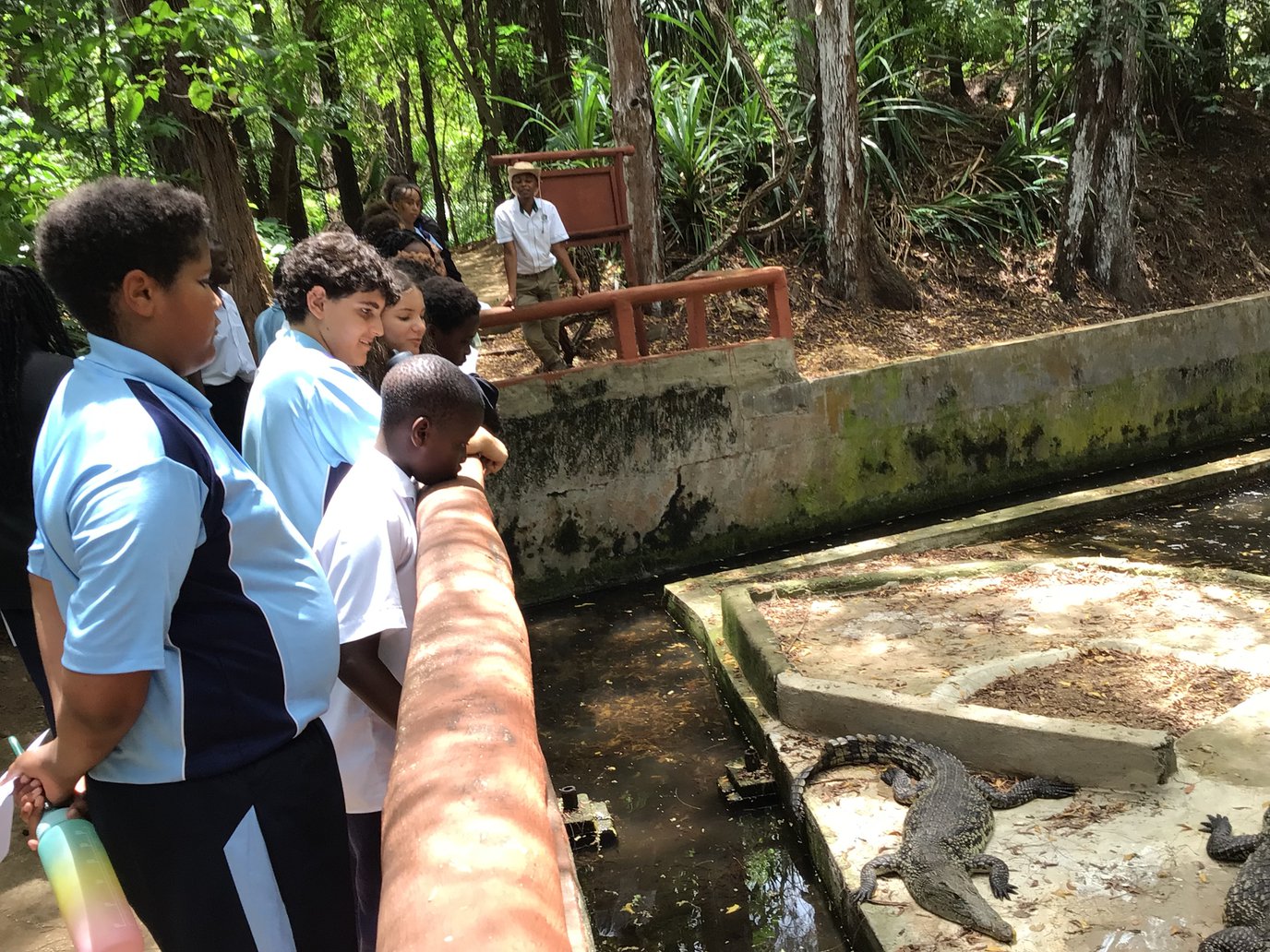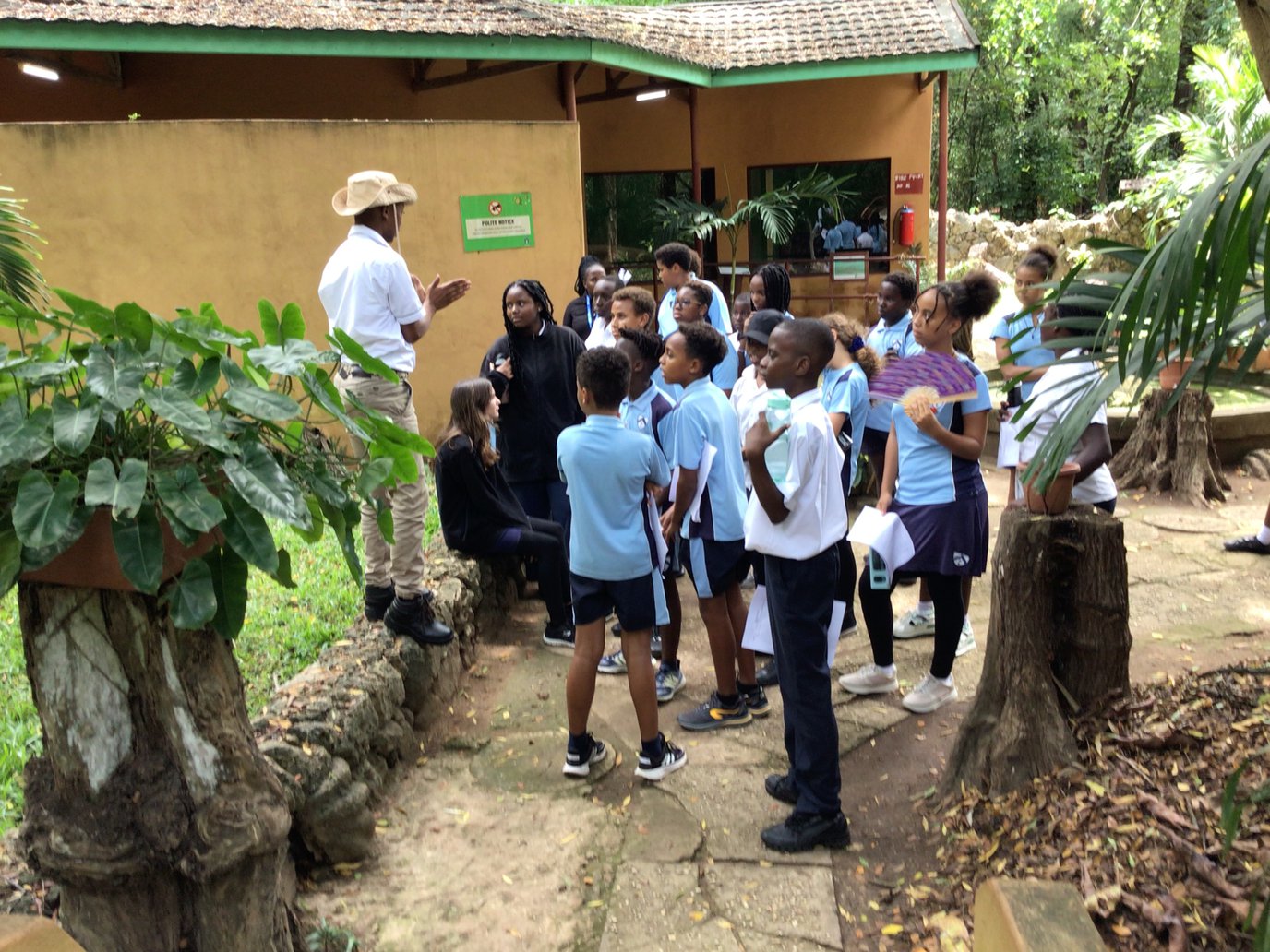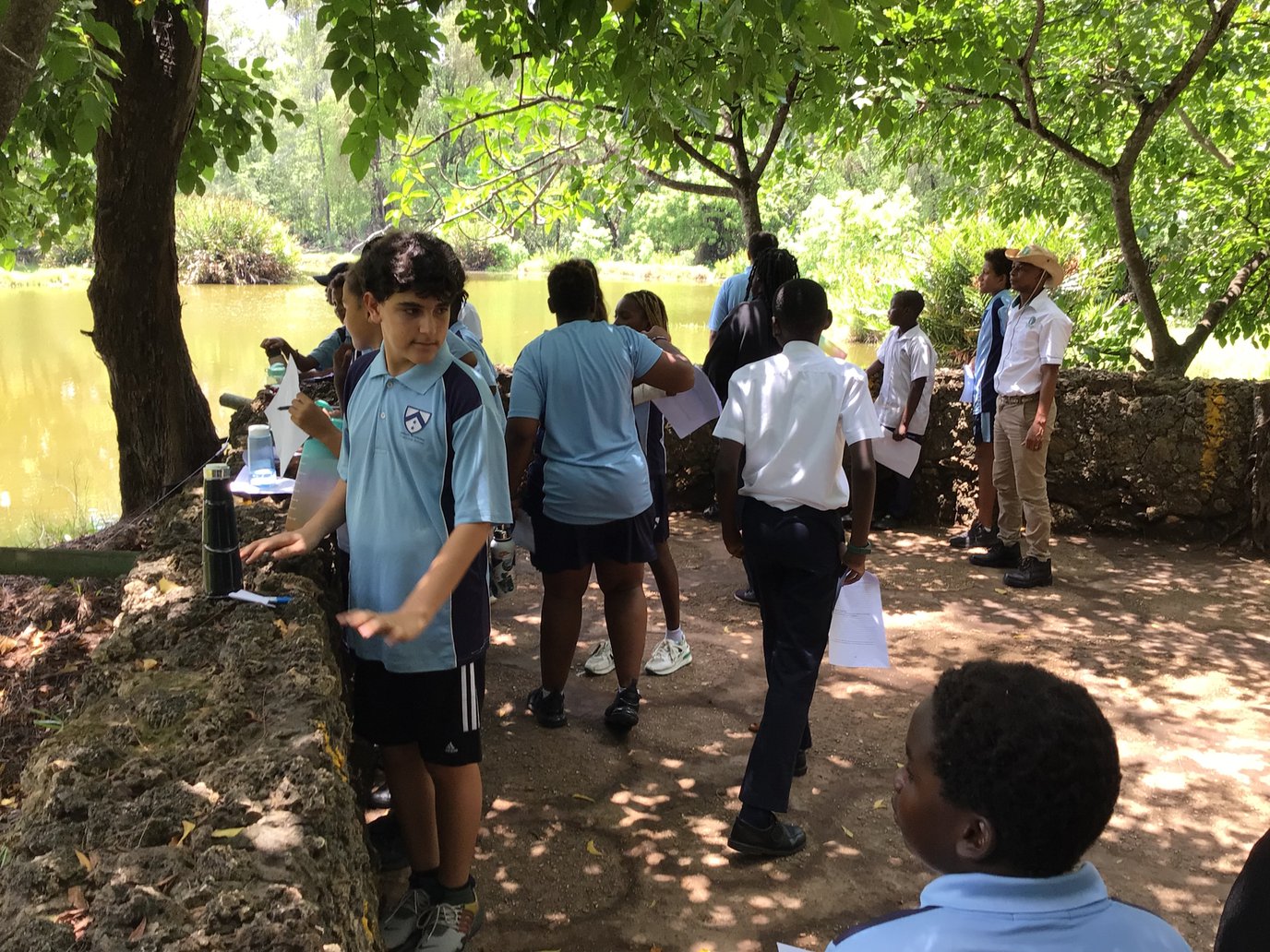Life-long learners - KS3 Geography and Science educational visit

27th October 2023
To start the second half of term 1, Key Stage 3 students went on a field trip at Haller Park, nestled in the heart of our town. This educational visit allowed the students to link what they had learnt in class to the real world.
In Geography the Year 7s are working on maps, the use of grid reference and drawing mental pictures in relation to the Haller park was handy. The Year 8 students have been talking about coasts in physical Geography. The rehabilitation of the quarry to make a park was a discussion worth engaging in. In Year 9, our case study is the Peak District National Park in the UK; using the Haller park as a practical example at hand, we discussed the challenges that the park may experience as a honey pot and the possible solutions.
In Science, the Year 8 and 9 students, having learnt about the feeding relationships in an ecosystem, were able to observe interdependence between the different organisms living in the park. The students were also able to classify organisms based on the characteristics. Their scientific inquiry skills including the ability to observe, collect data and draw conclusions were also put into a test.
The adventure began with feeding giraffes and it was incredible! Their towering presence and gentle nature amazed everyone. With pellets in our hands, we approached them. Their inquisitive eyes met ours as they gracefully extended their long necks to enjoy the particles. It was an unforgettable experience.
Our guided tour took us through the park, where students observed a variety of native flora and fauna. We marvelled at the snake park that was both thrilling and educational.
It teemed with slithering reptiles in various enclosures. Venomous and non-venomous snakes coiled and glided, while guides provided intriguing insights. It was a captivating experience, shattering myths and fostering appreciation for these fascinating creatures in a safe environment.
Visiting the park's crocodile enclosure was heart-pounding. Enormous, prehistoric reptiles basked lazily along the water's edge. The guide's stories about their power and ancient lineage from the Nile river were captivating. Watching them lurk beneath the surface, eyes peering out, left a lasting impression of nature's raw strength and beauty.
Students watched from a secure platform as a massive hippo submerged and surfaced in a serene waterdam. Its grunts and playful antics were both amusing and endearing. The experience offered a rare glimpse into the world of this beautiful creature, leaving the students in awe.
The park had a fluttering butterfly reserve, hosting a kaleidoscope of butterflies. They danced through the air, their vibrant colours mesmerising. We marvelled at their delicate, intricate patterns as they flitted from flower to flower. It was a serene and enchanting experience, connecting us to the beauty of the natural world.
Students worked on questionnaires as they moved on, engaging the guide with questions and discussing their answers with friends.
The park's geological history, including intriguing rock outcrops and unique rehabilitation strategies, fascinated us as we delved into our geographical studies. Our trip was not just educational but also a refreshing experience, connecting us to the natural world and enhancing students’ understanding of the geographical processes at work and in our local environment in science.
Ms Ohaga and Ms Oira
Science teacher Geography teacher

















